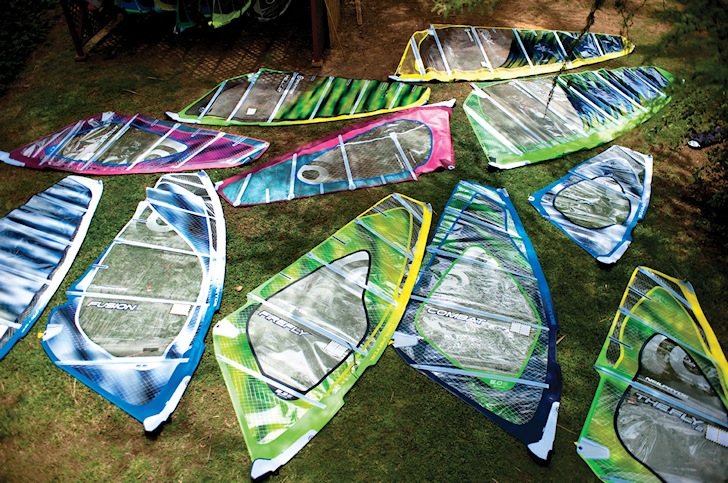Windsurfing sails are fragile. Scratches, salt, sand, water, and humidity can easily damage or destroy a good windsurfing sail. Learn how to protect your windsurfing sails to last longer.
A good windsurfing sail can last forever. However, the X-Ply materials and mono film should be carefully cleaned and stored.
The worst enemies of windsurfing sails are sand and humidity; the most common mistakes occur when de-rigging.
Windsurfers are tired - sometimes cold - and want to pack their equipment fast into the car.
Care and proper maintenance of windsurfing sails will save you money and improve performance, whether you're into speed windsurfing, freestyle windsurfing, wave windsurfing, or slalom windsurfing.
Check your sails regularly for wrinkles, scratches, imperfections, and dents that may appear in the delicate monofilm or x-ply panels and tear your sail in the near future.
Also, take a look at the clew eyelets, mast plug, and downhaul pulley attachment points.
Avoid Humidity and Heat
The before and after windsurf sessions often damage the sail, but the truth is that sail care starts while rigging the windsurfing kit.
When you're excited to get out in the water, be careful. Rig your sail on a smooth surface. The grass is always better than the sand.
When the wind is strong and you're rigging or de-rigging, protect your sail from gusts that may tear it.
Before and after sailing, leave your windsurf in the shade. Sun rays destroy monofilm and x-ply panels, along with salted water.
Rinse the sail in fresh water after a windsurfing session, even if you plan to sail in the following hours or days.
If you detect dirt, use a soft detergent and tepid water to remove it.
The best way to store your windsurfing sail is by laying it flat on the horizontal position in a cool, dry place.
Humidity and extreme heat are enemies of your favorite sail.
You can also roll the sail and put it in the proper bag, but make sure to do it from the head and slowly to avoid scratches and wrinkles in the monofilm.
Windsurfing Sails Maintenance 101
Learn how to take care of a windsurfing sail and make it last longer:
- Always rig your windsurfing sail on the grass;
- Don't let your sail flap in the wind when not rigged and under tension - otherwise, you'll damage the X-Ply materials and mono film;
- Avoid exposing your windsurfing sail to the sun for an extended period of time while rigging and de-rigging. The sun's rays will slowly damage the sail components;
- Always rinse your sail in fresh water, whether you'll be sailing tomorrow or next year. If possible, let it dry out in the shade;
- Always de-rig your sail after a windsurfing session. Roll the sail tightly from the head and put it in the bag;
- If you're storing your sail in a garage or ample indoor space, lie it horizontally flat on the ground. If you're keeping it in a vertical position, ensure that the luff pocket rests on the floor;
- Back to windsurfing after a long time off? Remove old dirt with mild detergent and tepid water;
Learn how a windsurfing sail works and how to rig it correctly.
